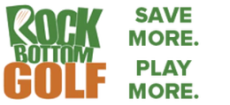The Hunt For Hidden Sugar

You don’t need a PhD to know that sugar is a leading cause of obesity. We all know that desserts have tons of sugar, but did you know that your salad may have just as much? It’s becoming harder and harder to avoid sugar in its many variations. Food manufacturers have known for a long time that the brain becomes addicted to sugar. According to brain scans, sugar is as addictive as cocaine with similar withdraw symptoms as heroin.
Sugar hids where you least expect it. Manufacturers add it because it’s cheap, tasty, and addictive. Flavored yogurt, tomato sauce, ketchup, bread, salad dressing, and crackers all have forms of sugar added during processing. Compounding the problem is that sugar goes by many aliases—sucrose, cane juice, simple syrup, fruit juice, and dozens more—and many of the foods that contain sugar, like bread and salad dressing, don’t taste remotely sweet.
Sugar is everywhere in our diet. One can of regular soda has 10 teaspoons(40 grams) of sugar per can – that’s 160 calories. A tablespoon of ketchup, for example, contains about a teaspoon of sugar, or about 16 calories of added sugar. The typical American eats the equivalent of 31 teaspoons(124 grams) of added sugar every day. That adds up to almost 500 added calories – about 25% of the average person’s caloric intake. Added sugars (added by someone else, that is!) are often a primary culprit behind gradual weight gain and the frustration of uninformed dieters.
Sugar is in healthy foods like fruits, vegetables and dairy, so you’re probably getting your daily amount of sugar before you even reach for that Oreo. The culprit here isn’t healthy food(don’t cut back your fruit and veg), but processed food.
So how much should you limit your sugar and how? The American Heart Association recommends that added sugar be limited to at most no more than 6-7 % of your total calories. This does not include sugar that naturally occurs in fruit(fructose) and dairy products(lactose). Check out the chart below that lists the maximum recommended daily sugar intake based on calorie levels.

Trying to find the amount of added sugar can be confusing. Nutrition Facts labels lump all sugars together, including naturally occurring sugars. For example, one cup of milk has 11 grams of sugar even though no sugar was added to it.
To find how much sugar has been added to a product consult this handy resource from the USDA. (PDF warning)

More Tips For Decreasing Hidden Sugar
1. Read the ingredients list and learn terms that mean added sugar. These include sugar, white sugar, brown sugar, confectioner’s sugar, corn syrup, dextrin, honey, invert sugar, maple syrup, raw sugar, beet sugar, cane sugar, corn sweeteners, evaporated cane juice, high fructose corn syrup, malt, molasses, and turbinado sugar, to name a few.
2. Don’t drink sugar. Drinks are a big source of sugar for many people and they don’t even fill us up. Nixing sugary drinks can take out up to 500 calories a day from your diet.
3. Curb Sugar cravings with fresh fruit. Fruit has sugar, but it also has fiber which slows the absorption of sugar into the bloodstream.
4. Swap sweets for sweat. According to researchers from the University of Colorado, working out may protect against the harmful effects of sugar. Plus you’ll burn calories!
5. Take baby steps. Don’t go cold turkey. Scale back your added sugar slowly and you’ll find your sugar cravings will diminish. Your taste buds will adjust over time.

